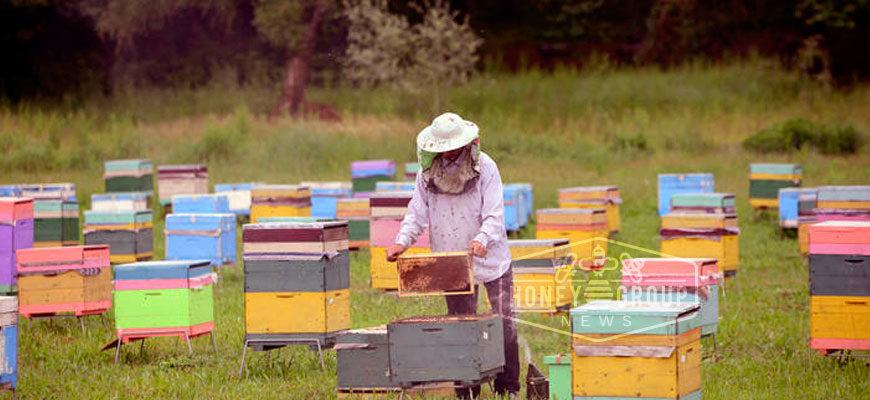Native bees are valuable crop pollinators. The over 3,500 species of native bees (often called pollen bees) help increase crop yields and may serve as important insurance when cultivated European honey bees are hard to come by.
There are simple, inexpensive ways you can increase the number of native bees living on your land. Any work you do on behalf of pollinators will support other beneficial insects and wildlife. Improvements to pollinator habitat may be eligible for financial support from government programs.
Principles of Farming for Crop Pollinators
Know the habitat on your farm. Using the illustration as a guide, look for areas on and around your land that can support native bees. Most native bees are solitary or live in small colonies. Bumble, digger, and sweat bees make up the bulk of pollen bees in most parts of the country.
Protect flowering plants and nest sites. Once you know where bees are living and foraging, do what you can to protect these resources from disturbance and pesticides.
Enhance habitat with flowering plants and additional nest sites. Most bees love sun and prefer to nest in dry places. Nests are created underground, in twigs and debris, and in dead trees or branches. You can add flowers, leave some ground untilled, and provide bee blocks (tunnels drilled into wood) to increase the number of native bees on your farm.
Critical Requirements of Native Bees
Food. Bees eat only pollen and nectar. In the process of gathering these resources, they move pollen from one flower to another, and thus pollinate your crops. Bees rely on an abundance and variety of flowers and need blooming plants throughout the growing season. Native plant species are particularly valuable.
Shelter. Native bees don’t build the wax or paper structures we associate with honey bees or wasps, but they do need places to nest, which vary depending on the species.
- Wood-nesting bees are solitary, often making individual nests in beetle tunnels in standing dead trees.
- Ground-nesting bees include solitary species that construct nest tunnels under the ground.
- Cavity-nesting social species—bumble bees—make use of small spaces, such as abandoned rodent burrows, wherever they can find them.
Protection from pesticides. Most insecticides are deadly to bees, and unnecessary herbicide use can remove many of the flowers that they need for food.
Getting Started
Here are two things that you can do to begin improving habitat for native bees on your land:
Minimize tillage. Many of our best crop pollinators live underground for most of the year, sometimes at the base of the very plants they pollinate. To protect them, turn over soil only where you need to.
Allow crops to bolt. If possible, allow leafy crops like lettuce to flower if they need to be tilled right away. This gives bees additional food sources.
If you want to do more to increase the number of native bees pollinating your crops, you can plant hedgerows or windbreaks with a variety of flowering plants and shrubs, reduce or eliminate your use of pesticides, or work with your neighbors to protect natural areas around your farm.
Exercising Care with Insecticides
If you use insecticides, choose ingredients targeted to specific species (for example, Btk for pests such as leaf rollers) and the least harmful formulations (i.e., granules or solutions). Spray on calm, dry evenings, soon after dark when bees are not active. Keep in mind that even when crops are not in bloom, some of your best pollinators are visiting nearby flowers, where they may be killed by drifting chemicals.
 Certificate Analisis
Certificate Analisis


